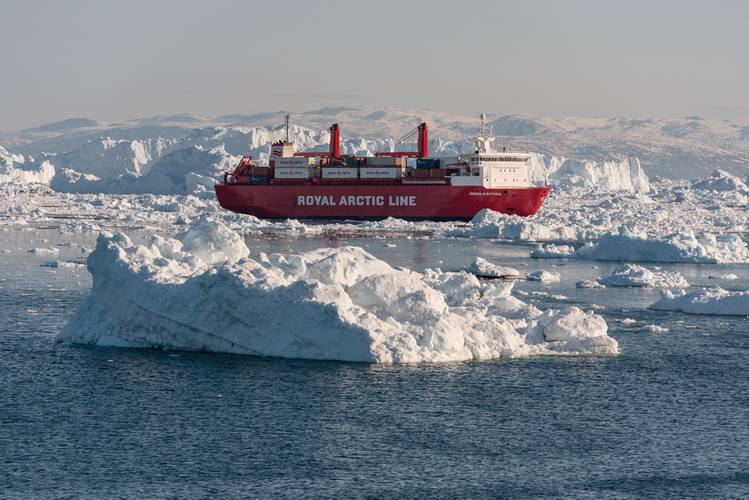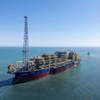Arctic Taskings for the Coast Guard
On January 30, 2014, the White House released the Implementation Plan for the National Strategy for the Arctic Region. The purpose of the Implementation Plan is to put flesh on the bones of the May 10, 2013 National Strategy for the Arctic Region. The National Strategy had identified three lines of effort to address challenges posed by the changing Arctic environment. The Implementation Plan sets forth the methodology, process, and approach for executing the Strategy. Most importantly, though, the Implementation Plan assigns lead agencies and supporting agencies for each of 36 identified taskings. For each tasking, there are defined objectives, next steps (with specific timelines), and methodologies for measuring progress toward completion of the task.
The Congressional Research Service (CRS), the nonpartisan think-tank for the Legislative Branch, has written four reports on Changes in the Arctic and consequent issues confronting the Congress. The most recent report noted that the United States is an Arctic nation and has substantial economic, security and environmental interests in the region. Of the five Arctic coastal nations, four are in the process of preparing Arctic territorial claims for submission to the United Nations Commission on the Limits of the Continental Shelf. The United States is not currently preparing such a claim because only it has not acceded to the United Nations Convention on the Law of the Sea (UNCLOS).
The Russian Federation has a substantial fleet of polar icebreakers and carries out extensive activities in the polar region, including regular voyages to the geographic North Pole. The United States has one operational polar icebreaker, the USCGC Polar Star, and that icebreaker has exceeded its intended 30-year service life. Another vessel, USCGC Healy, is considered a medium icebreaker. While it has less icebreaking capability than Polar Star, Healy has extensive scientific research assets, also important for completion of the Implementation Plan.
In July 2013, the Center for Strategic and International Studies (CSIS) issued a thoughtful study entitled “Arctic Economics in the 21st Century” regarding choices Arctic states (and particularly the United States) will have to make in coming years regarding development of Arctic economic resources and protection of its fragile ecosystem. To date, Canadian and American interventions in the Arctic have been economically driven and have centered heavily on extractive industries. As a consequence, both nations have very limited infrastructure in the Arctic and limited polar icebreaking assets. While oil and gas extraction will continue to be challenging and expensive (particularly given that oil and gas prices are not expected to rise in the foreseeable future), extraction of rare earths and other strategic minerals from the Arctic region has significant and current economic potential.
The Red Dog mine on the Alaska coast north of the Bering Strait is the world’s largest source of zinc and a significant source of lead, despite its current ability to load ore onto bulk carriers only during a 100-day shipping season and its lack of a deepwater port – requiring use of barges to transship the ore. Other mines operate in islands of the Canadian Arctic Archipelago and are being opened in Greenland and Siberia. These developments will increase traffic in Arctic waters by large commercial carriers. Traffic through the Northern Sea Route is already increasing in both volume and duration. In 2013, we witnessed the first full transit of the Northwest Passage when a dry bulk carrier undertook a voyage from British Columbia to Finland. We are also seeing voyages to Arctic waters, including transits of the Northwest Passage, by passenger vessels – not all of which are ice-strengthened. In addition, the Arctic waters of North America are one of the last remaining frontiers for the fishing industry.
There is minimal infrastructure in the Arctic. Aids to maritime navigation are largely nonexistent. Assets for search and rescue and for response to spills of oil and hazardous material are located almost a thousand miles away. There are also no deepwater ports in the U.S. Arctic. Most landings there are on unimproved beaches.
The new Implementation Plan attempts to address all of these issues and more. It is noteworthy that, of the 36 specific taskings in the Plan, the U.S. Coast Guard is designated as the lead agency for seven and as a supporting agency for 19.
The most important of the USCG taskings, and a force-multiplier for all other taskings, is the requirement to sustain the federal capability to conduct maritime operations in ice-impacted waters of the Arctic. In order to ensure that the United States maintains icebreaking and ice-strengthened ship capability with sufficient capacity to project a sovereign U.S. maritime presence, support U.S. interests in the polar regions and facilitate research that advances the fundamental understanding of the Arctic, the Department of Homeland Security and the Coast Guard are directed to develop a document by the end of 2014 that lists the capabilities needed to complete the tasking. More importantly, by the end of 2017, they are directed to develop long-term plans to sustain federal ability to physically access the Arctic with sufficient capability to support U.S. interests. In my opinion, this can only be done through the construction of at least three new, more powerful polar icebreakers.
The other taskings for which the Coast Guard is designated the lead agency also reflect traditional Coast Guard missions. These consist of enhancing Arctic domain awareness; improving hazardous material spill prevention, containment and response; promoting Arctic oil pollution preparedness, prevention and response internationally; enhancing Arctic search and rescue capability; expediting development and adoption of the IMO Polar Code, and promoting Arctic waterways management. Arctic Shield 2013 saw Coast Guard cutters, buoy tenders, aircraft, equipment and personnel deployed in the Chukchi and Beaufort Seas and adjacent coasts where exercises were conducted addressing such taskings. In May 2013, the Coast Guard published its Arctic Strategy discussing application of its traditional missions to the polar environment.
As previously stated, the Coast Guard is designated as a supporting agency in nineteen taskings in the Arctic Strategy Implementation Plan. These range from preparing for increased activity in the maritime domain to promoting international law and freedom of the seas to identifying and assessing invasive species risks and impacts. One particular tasking highlights the importance of adequate icebreaker capability – assisting in the delineation of the outer limit of the United States extended continental shelf. As this area lies on the floor of the Arctic Ocean more than 200 nautical miles north of Alaska, surveys are almost impossible without the assistance of a polar icebreaker.
The May 2011 Department of Defense Report to Congress on Arctic Operations and the Northwest Passage is startling for its candid admissions of the lack of DOD capabilities in Arctic waters. The report states, in particular:
The United States needs assured Arctic access to support national interests in the Arctic. This access can be provided by a variety of proven capabilities, including submarines and aircraft, but only U.S.-flagged ice-capable ships provide visible U.S. sovereign maritime presence throughout the Arctic region. This need could potentially be met by either icebreakers or ice-strengthened surface ships, none of which are in the U.S. Navy current surface combatant inventory, but which do exist in U.S. Coast Guard’s inventory in limited numbers.
The Implementation Plan constitutes the first clear commitment of the federal government to strongly enhance its presence in the Arctic. The previously issued Strategy was more of a vague wish-list. Now, federal agencies have defined taskings and timelines. Among other things, this should soon result in the inclusion in the federal budget of funding for new icebreakers, which are long overdue. Most of the other taskings in the Implementation Plan are dependent thereon.
The baton now passes to the Congress to analyze the Implementation Plan with all deliberate speed. This is not a partisan issue, but one that should have broad support. Funds will have to be appropriated, but everything does not have to be done immediately. Some measures, though, cannot be delayed further without jeopardizing the entire plan.
You can’t win the competition for the Arctic if you don’t show up.
The Author
Dennis L. Bryant is with Maritime Regulatory Consulting, and a regular contributor to Maritime Reporter & Engineering News as well as online at MaritimeProfessional.com.
t: 1 352 692 5493
e: [email protected]
(As published in the March 2014 edition of Maritime Reporter & Engineering News - www.marinelink.com)
















